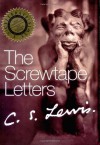My books blog
Choosing the best resume fonts (and avoiding the worst!)

While the content of your resume is the most important, the font you choose will only be a factor if you choose the wrong one. If you don't want write resume turn to professional coverletter and resume service to save your time!
Here are 3 issues to consider when choosing a font:
how it looks
how easy it is to read
how much space it takes
The best resume fonts are easy to read and help you fit plenty of good content on the page. Bad fonts are difficult to read or eat up space that should be filled with descriptions of your skills.
The very first impression a resume will make on a hiring manager is its readability. While a resume with a difficult to read font is unlikely to be thrown out, it can cause a hiring manager to spend less time on it - and that may result in a qualified individual being overlooked.
The Best Resume Fonts
The fonts that should be your standard go-to fonts are also some of the most popular fonts for writers of newspaper and web site content.
The best fonts include:
New Times Roman
Calibri
Arial
These fonts help to display information clearly and to print well from a variety of document creators. This can be essential given that you will likely be submitting your job application materials electronically, as consequently have no way to tell what kind of machine will be used to view and print your documentation.
Other fonts to keep in mind are:
Arial Narrow – this font combines the readability of the Arial font with a tight spacing scheme that can help you fit more content on the page>
Verdana, Tahoma, or Corbel – these fonts are highly readable, but they use small bits of extra spacing in the lettering, subtly stretching content across the page and creating a full look for sparse documents
The Worst Resume Fonts
Occasionally, you may be tempted to gain an edge by choosing an unconventional font. While there are situations when this approach could pay off, you definitely want to use caution when doing so.
The worst fonts make your resume look unprofessional and your content difficult to read.
Even if you want to make your resume stand out it is vital that it remains easy on the eyes and therefore easy to read. After all, you may succeed in getting your resume noticed, only to have it pitched for being too difficult to comprehend.
In short, avoid any fonts that make managers have to squint or do a double take to read your resume.
Font to avoid include:
Script Fonts, which on a resume are not cute, creative, or whimsical. They are hard to read and have no place on a professional resume, and therefore should be avoided at all costs!
Embellished fonts, such as Jokerman or any of the Gothic fonts
In addition to looking out of place on the modern page, many of these fonts unduly stretch text, leaving managers to wonder if you are covering up a lack of skills
Specialty fonts. Any non-standard fonts that have to be downloaded as a part of an extension pack or as a promotion from your favorite web site, should never be used
Managers will not download a font file simply to view your resume, and they could cause the resume to default to a different font when opened - thus destroying all the formatting





